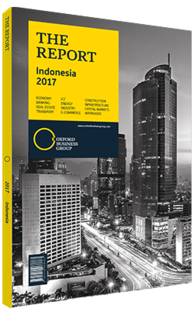Smaller vendors a major player in Indonesia's retail sector
Traditional family-run corner stores and kiosks have long been a staple of the retail landscape across Indonesia, providing a range of necessities for both urban and rural neighbourhoods across the country. But over the past decade expansion efforts by larger franchise chains have been threatening this long-held market structure. The mini-mart/convenience store segment has exploded onto the scene as the highest growth segment in the retail industry. Propelled by growing demand for uniform, higher-quality products on display in well-lit, air-conditioned stores, the mini-mart segment has increased its share of the retail market from 3.4% in 2002 to 18.6% in 2015.
New Contender
The dramatic rise of convenience stores has come at the expense of both traditional markets, which saw their market share fall from 82.9% to 73.8% over the 2002-15 period, and newer super-and hypermarkets, which declined from 13.7% to 7.8%. Excluding traditional vendors and focusing on modern retailers, mini-markets accounted for 56% of the Rp190trn ($13.9bn) modern retail market in 2015, compared to just 41% of Rp70trn ($5.1bn) in 2008.
However, even after years of strong revenue growth, the rapidly expanding mini-market segment was hit hard in 2015 by a triple shot of slowing economic growth, a ban on alcohol sales in smaller stores and rising input costs for food products as a result of a depreciating rupiah. These conditions have spurred fierce competition in the convenience store segment, as well as the overlapping quick-service restaurant (QSR) segment, as companies slash prices to retain market share. The net effect is taking its toll on the bottom lines of these companies as revenues fall from strong double-digit growth into negative territory. Sales for the 7-Eleven chain, for instance, went from a robust 25% expansion rate in 2014 to an 8% decline in 2015 as the company shuttered 20 stores, while Alfamart’s net profits declined from Rp529bn ($38.6m) to Rp464bn ($33.9m) in the same period.
Market Share
The convenience store and mini-market segment is currently dominated by two players: Alfamart, with a total of 12,258 stores by year-end 2015, and Indoritel, with 12,210 Indomaret outlets. A handful of competitors also operate smaller networks numbering in the hundreds, including 7-Eleven, Super Indo, Giant Ekspress, Ramayana, Starmart, Lawsons and Circle K.
Of these players, the larger networks such as Alfamart, Indomaret and Circle K have expanded out of the national capital into other urban centres in Bali, Sumatra and Sulawesi, while the remaining competitors are all engaged in an increasingly competitive market for the 30m consumers in the Greater Jakarta area. For instance, 7-Eleven, is looking to compete more in the QSR segment by providing an array of inexpensive ready-to-eat meals in an attempt to tap into the fast-food market. Foods such as fried chicken, ready-to-eat boxed meals and similar products now make up around half of the company’s revenue, according to parent company Modern Internasional. In support of this strategy, the firm has converted an old 5-ha Fuji film facility (the company divested itself of this partnership in 2015) into a central kitchen capable of preparing food for as many as 1000 outlets when fully operational.
Saturation Levels
In spite of the recent slowdown in the segment, significant untapped potential remains both in terms of intensifying saturation in urban areas and expanding operations into secondary markets. The saturation of 7-Eleven stores in developed economies still remains far greater than in Indonesia, even in Jakarta. In Thailand, for instance, there is one store for every 10,000 people while in Japan and Taiwan this ratio decreases even further to one store for every 5000 and 4500 people, respectively. With a population of around 30m, Jakarta could thus sustain some 2500 outlets on its own, with 10 times that number meeting market needs nationwide.
You have reached the limit of premium articles you can view for free.
Choose from the options below to purchase print or digital editions of our Reports. You can also purchase a website subscription giving you unlimited access to all of our Reports online for 12 months.
If you have already purchased this Report or have a website subscription, please login to continue.

